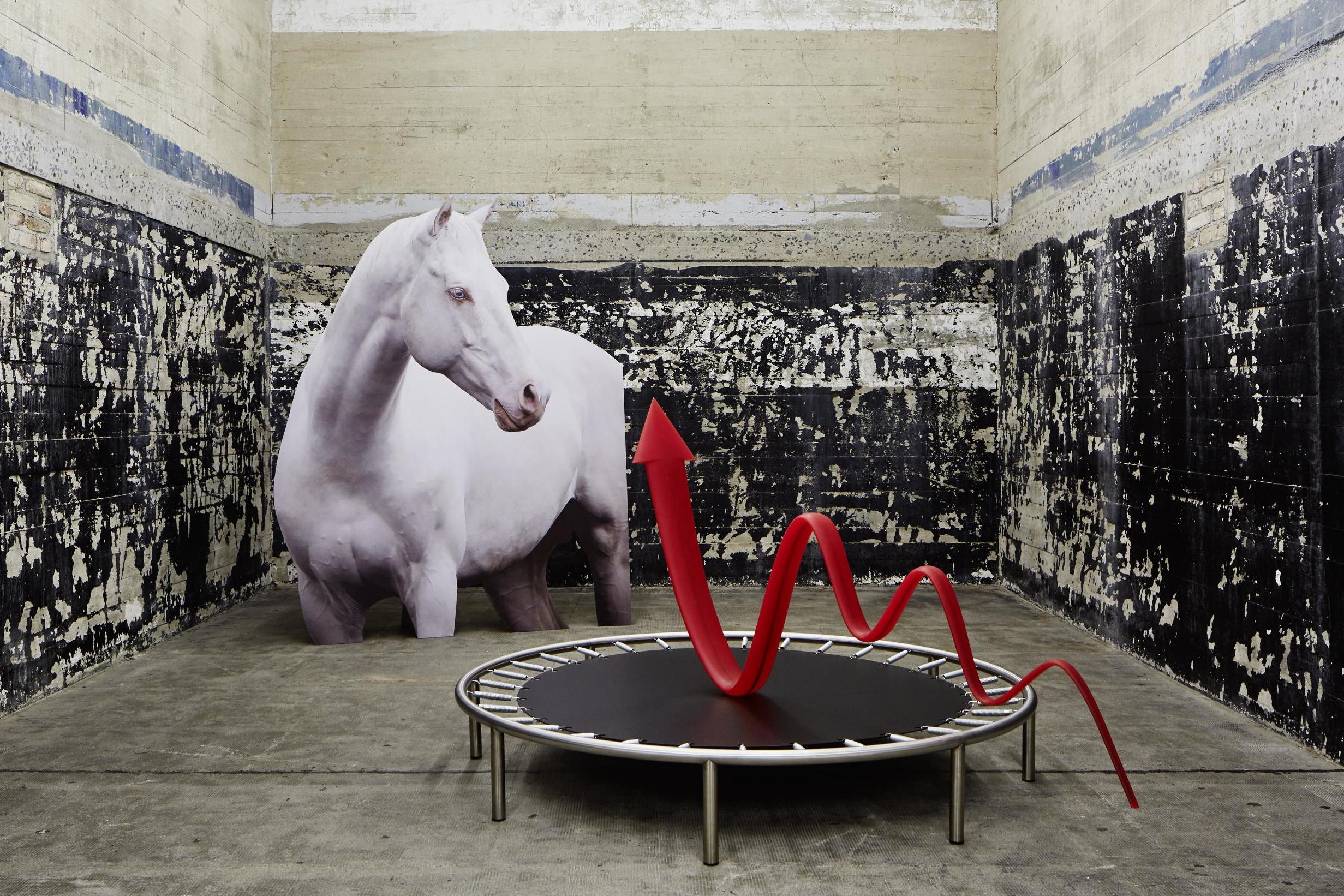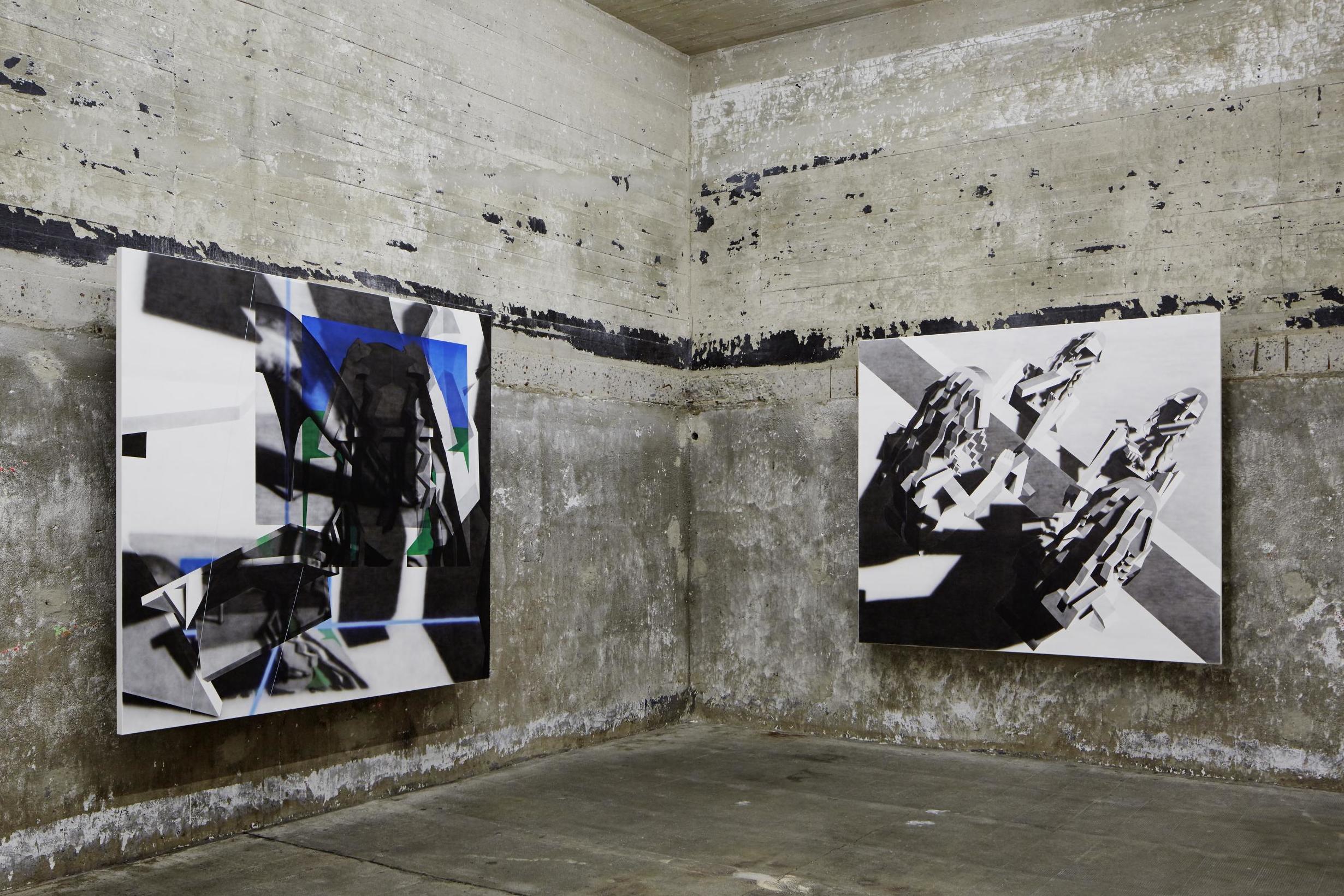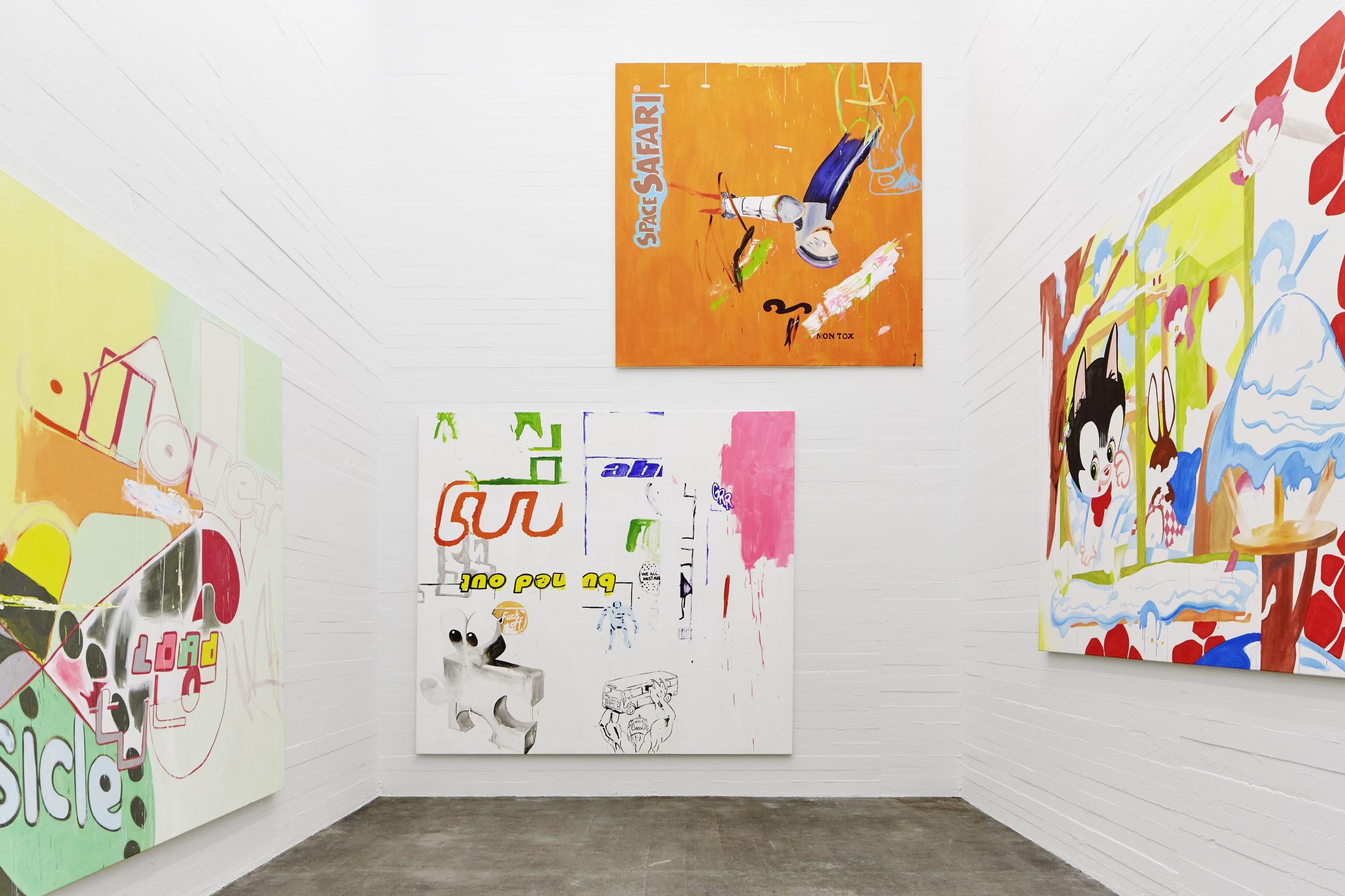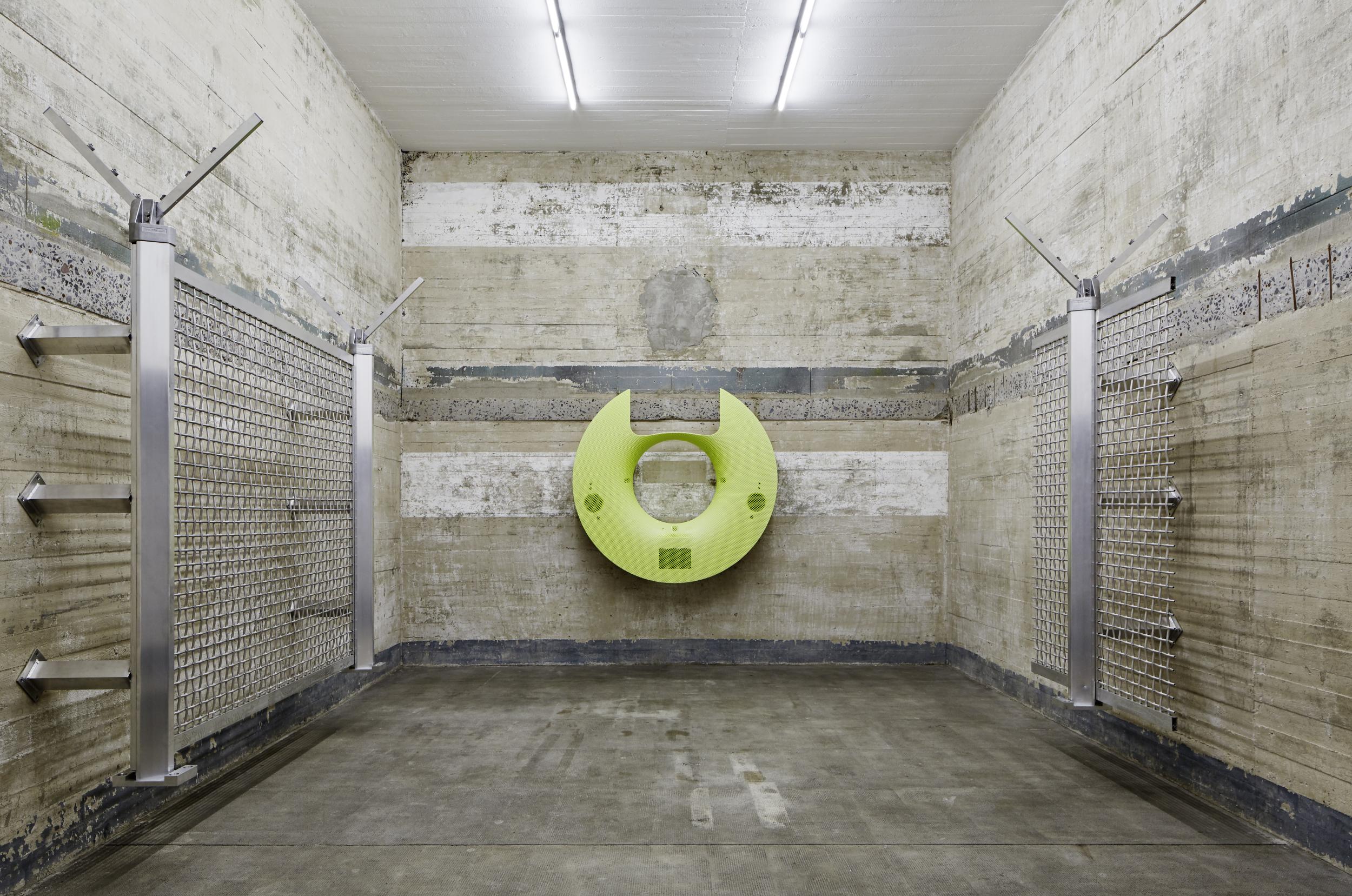Boros Bunker: How Berlin’s ugliest building became its coolest art gallery
The re-purposed Boros Bunker represents Berlin’s persistent spirit of reinvention

Your support helps us to tell the story
From reproductive rights to climate change to Big Tech, The Independent is on the ground when the story is developing. Whether it's investigating the financials of Elon Musk's pro-Trump PAC or producing our latest documentary, 'The A Word', which shines a light on the American women fighting for reproductive rights, we know how important it is to parse out the facts from the messaging.
At such a critical moment in US history, we need reporters on the ground. Your donation allows us to keep sending journalists to speak to both sides of the story.
The Independent is trusted by Americans across the entire political spectrum. And unlike many other quality news outlets, we choose not to lock Americans out of our reporting and analysis with paywalls. We believe quality journalism should be available to everyone, paid for by those who can afford it.
Your support makes all the difference.Forget “poor but sexy.” The quote that best describes Berlin is from German cultural critic Karl Scheffler, who called it a city “condemned always to be becoming but never to be” (Berlin – The Fate of a City, 1910). Many Berliners would see this as a blessing: the German capital is constantly reinventing itself, and when you’re here, you can too. Generations have come to escape the crushing weight of conventional life, to join an off-kilter milieu of artists and misfits, scholars and anarchists. But the city’s buildings, many still empty today, also hold the promise of reinvention.
Art collectors Christian and Karen Boros heard their call around 15 years ago, as they sought a home for their 700-piece contemporary collection. “We looked at old factories, schools, hospitals, swimming pools – everything empty. Places crying out, ‘Help! Give me a new use!’” In 2002, when they came upon what Boros calls “surely the ugliest building in Berlin” – a World War Two bunker in Mitte, at the time not yet Berlin’s hipster centre – it was love at first sight. To the city’s artists and art lovers, the Boros Collection has been an open secret ever since, the bunker’s hulking façade and spray-painted interior walls a handy metaphor for Berlin’s layered history.
Built in 1942, the bunker was a fruit storehouse during East German times, then a fetish club after the fall of the Wall, when many foreboding spaces were put to hedonistic use by DJs and bartenders. Today, a visit to the bunker is as jarring as its history would suggest. Access what appears an impenetrable concrete block through a fortress-like front door, and you are greeted by name (“we want them to feel not like visitors, but like guests”) and offered a drink. A series of interconnecting rooms have a topsy-turvy feel: a few have been cut to height for specific pieces. Contemporary works of every medium range from the world-renowned (Ai Wei Wei, Olafur Eliasson) to the art-world darlings (Avery Singer, Michel Majerus, Paulo Nazareth). Pieces from the collection are switched out every four years. Installed last year, a third exhibition focuses on so-called “post-internet art”.

The couple weren’t just looking for a way to reinvent the concept of a gallery, though. They wanted to rethink modern living as well. The improbable result was a penthouse atop the bunker, designed by the same architect. Their home isn’t part of the tour, but just knowing they’re up there is strangely compelling. It’s easy to imagine yourself into their lives; no doubt part of the charm of visiting any private art collection. “It’s not like I go down in my bathrobe every day and look at the art with a glass of red wine,” says Boros with characteristic wryness. “But the feeling of sitting on an accumulation – that I could go down at any time and look – is very nice.”
That feeling of richness – of being surrounded by culture – is familiar to all who spend time in Berlin. Indeed, it is one of the capital’s greatest strengths. The Boros Collection may not be a secret anymore, but in this city of constant reinvention, there are plenty of places now getting a second or even third lease of life. When asked about the fast pace of change in Berlin today, Boros is hopeful: “As long as so much is still being created here, this city will live on, not repeating itself, but reinventing itself.”
Here are a few other places catching Berlin’s spirit of reinvention:
Kindl Brauerei
This redbrick brewery in Berlin’s Neukölln district has recently been reborn as KINDL – Centre for Contemporary Art. Like the Boros Bunker, its post-industrial feel (the ensemble includes a power house and a boiler room) and soaring spaces are perfect for large installations.

Tempelhof Airport
The Nazi-era airport closed in 2008 and reopened its airfield as a massive park. Now Berliners bike and jog down disused runways, or lounge and grill in view of the hulking, fascist-era buildings. Controversially, some now house refugees waiting for permanent homes.
Teufelsberg
Teufelsberg is a hill made out of the rubble of World War Two, on top of which sits a tattered, graffitied but highly photogenic Cold War spy station. Rumour has it that the remains of an Albert Speer-designed Nazi military school still sleep below the rubble.

Café Strauss and Silent Green Kulturquartier
Located in the Kreuzberg and Wedding districts respectively, these cafés bring new life to city cemeteries. Café Strauss serves up cakes and coffee in a former mortuary, while Silent Green stages concerts and cultural events in a one-time crematorium.
Stone Brewing Berlin
The California brewery has set up its European base in an old gasworks in leafy, residential Mariendorf. Soaring, cathedral-like architecture and extensive outdoor space right next to the S-Bahn tracks makes for a decidedly industrial, quintessentially Berlin drinking experience.
Join our commenting forum
Join thought-provoking conversations, follow other Independent readers and see their replies
Comments